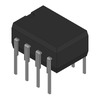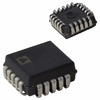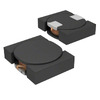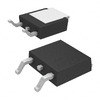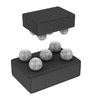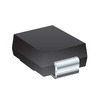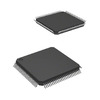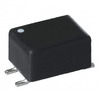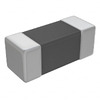TIP142 Transistor: Pinout, Equivalent, and Datasheet
This article explores the TIP142, a power Darlington transistor renowned for its efficiency and exceptional current gain capabilities. Ingeniously designed to house two transistors in a single package, this device simplifies the assembly process while enhancing current handling, making it a prime choice for power-demanding applications. By combining functionality and reliability, the TIP142 stands out as a preferred solution aiming to reduce component count while optimizing performance.Catalog
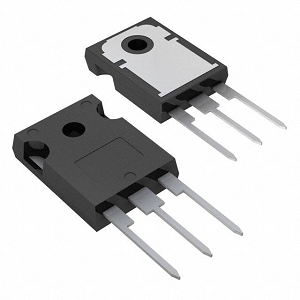
What is the TIP142?
The TIP142 transistor is built with advanced technology and features a unique design that improves its performance. It uses what's called a "base island" structure and a Darlington configuration, which work together to provide strong amplification and keep power loss low. Thanks to its advanced design, the TIP142 is stable and reliable, making it a great choice for tasks that need consistent performance in different environments. The "base island" layout helps create a smoother electrical flow, cutting down on interference and energy waste. Over time, this design has proven to extend the lifespan and effectiveness of the component in different uses. The Darlington configuration combines two transistors in one package, allowing for higher current output and improving efficiency. This setup simplifies circuit design by reducing the number of parts, which often leads to fewer failures and saves space in the design. With its high amplification abilities, the TIP142 can boost current with very little input, which makes it useful for those who want efficient circuits. The TIP142's low saturation voltage helps it reduce power loss, which is important for energy-efficient applications. This aligns well with the growing focus on sustainability, as efficient power use is now a key goal in technology design.
TIP142 Pin Configuration
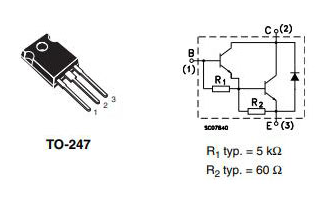
TIP142 Symbol, Footprint, and CAD Model
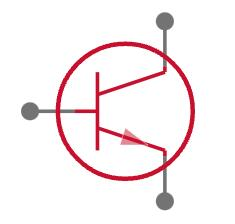

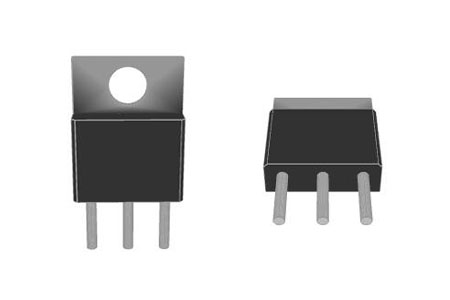
Features of the TIP142
• Voltage: Can handle up to 100V between collector and emitter, and 5V between emitter and base. This makes it reliable for high-voltage applications.
• Current: Supports up to 10A, which is useful for high-current circuits like power amplifiers and motor control.
• Power Dissipation: Can dissipate 125W of power, so it needs proper cooling (like a heat sink) to avoid overheating.
• Temperature Range: Works in temperatures from -65°C to +150°C, so it’s suitable for harsh environments.
• Design & Amplification: Comes in a TO-247 package for easy mounting, and has a high current gain (1000), which amplifies signals effectively.
Applications of the TIP142
Signal Processing
In the signal processing, systems often demand components adept at managing fluctuating voltages and currents. The TIP142 excels here, playing a role in amplifiers and signal modulation devices, where effective processing is an art for performance.
Power Management
Power management systems are areas where the TIP142 shines in its effectiveness at power conversion and regulation. This transistor does not just ensure stable performance; it acts as a guardian of power supply units. Crafting systems that require steady power flows in diverse and ever-changing conditions.
Portable Gadgets
Smartphones, tablets, and other portable gadgets reap the rewards of the TIP142’s energy management capabilities. This component helps extend battery life and boost the longevity of devices. Others relay on such advancements to push the boundaries of compact power management, embracing both the challenges and thrills of miniaturization-driven innovation.
Consumer Electronics
The TIP142 graces consumer electronics, from televisions to home appliances. Its durability contributes to reducing component failure rates, introducing a harmony of performance and cost-effectiveness.
Industrial Machinery
When it comes to industrial machinery, resilience is key, as these components face challenging environments and demanding cycles. The TIP142 is a go-to choice for motor control circuits and power regulation. It provides insights into improving machinery efficiency and minimizing downtime by enduring the grind of industrial demands.
Equivalent for the TIP142 Transistor
• 2SD1197
• 2SD2390
• 2SD2390-O
• 2SD2390-P
• 2SD2390-Y
• BDV65B
• BDV65BG
• BDV67B
• BDV67C
• BDV67D
• TIP142G
Test Circuit of the TIP142

Building a simple test circuit to switch a load with a TIP142 NPN transistor is a good way to start checking how the circuit will perform. To put together this test setup, you'll need a TIP142 transistor, a resistor that matches the expected current and power levels, a power supply, and tools like an oscilloscope and a multimeter. Start by carefully following a circuit diagram to assemble everything. Then, gradually increase the load to see how the transistor responds, simulating conditions. This approach helps you find the limits of the circuit and spot any issues that might cause it to fail. After testing, review the results, focusing on things like current gain, saturation voltage, and heat. This helps you see patterns that could affect how you design the circuit.
TIP142/TIP147 Power Amplifier
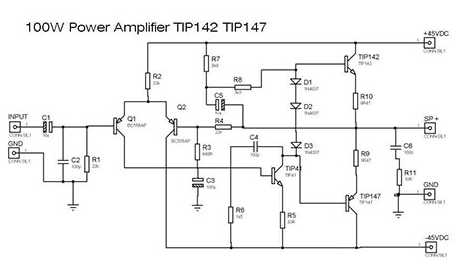
The power amplifier provides strong performance, delivering 100 watts of continuous power at 8 ohms and 150 watts at 4 ohms. It can drive 12-inch speakers suited for mid-range, midbass, and subwoofer sounds. The amplifier uses TIP142 and TIP147 transistors in a special NPN/PNP Darlington setup to boost power. In the buffer and driver section, it uses a BC556AP PNP transistor and a TIP41 NPN transistor. For best results, it's suggested to pair the TIP41 transistor with a heat sink and a thermal switch.
TIP142 Technical Specifications
|
Type |
Parameter |
|
Factory Lead Time |
8 Weeks |
|
Mounting Type |
Through Hole |
|
Number of Pins |
3 |
|
Transistor Element Material |
SILICON |
|
Number of Elements |
1 |
|
Operating Temperature |
150°C TJ |
|
JESD-609 Code |
e3 |
|
Moisture Sensitivity Level (MSL) |
1 (Unlimited) |
|
Termination |
Through Hole |
|
Terminal Finish |
Tin (Sn) |
|
Max Power Dissipation |
125W |
|
Base Part Number |
TIP142 |
|
Polarity |
NPN |
|
Power Dissipation |
125W |
|
Transistor Type |
NPN - Darlington |
|
Mount |
Through Hole |
|
Package / Case |
TO-247-3 |
|
Weight |
6.500007g |
|
Collector-Emitter Breakdown Voltage |
100V |
|
hFE Min |
500 |
|
Packaging |
Tube |
|
Part Status |
Active |
|
Number of Terminations |
3 |
|
ECCN Code |
EAR99 |
|
Voltage - Rated DC |
100V |
|
Current Rating |
10A |
|
Pin Count |
3 |
|
Element Configuration |
Single |
|
Transistor Application |
SWITCHING |
|
Collector Emitter Voltage (VCEO) |
100V |
|
Max Collector Current |
10A |
|
Current - Collector Cutoff (Max) |
2mA |
|
Collector Base Voltage (VCBO) |
100V |
|
VCEsat-Max |
3 V |
|
Length |
15.75mm |
|
REACH SVHC |
No SVHC |
|
RoHS Status |
ROHS3 Compliant |
|
DC Current Gain (hFE) (Min) @ Ic, Vce |
1000 @ 5A 4V |
|
Vce Saturation (Max) @ Ib, Ic |
3V @ 40mA, 10A |
|
Emitter Base Voltage (VEBO) |
5V |
|
Height |
20.15mm |
|
Width |
5.15mm |
|
Radiation Hardening |
No |
|
Lead Free |
Lead Free |
Package for TIP142
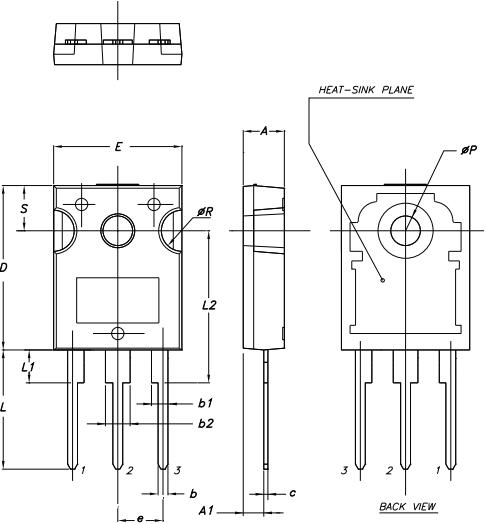
TIP142 Manufacturer Information
STMicroelectronics is a leading figure in the semiconductor sphere, known for developing cutting-edge microelectronics solutions. Utilizing advanced technology alongside substantial manufacturing capabilities, the company offers a vast array of pioneering products. Its pursuit of technological improvement and superior engineering propels the progression of semiconductors, deeply embedded in contemporary electronics. This company's prowess is evident in its development of intricate semiconductor solutions for numerous electronic uses. Through substantial investment in research and development, STMicroelectronics consistently expands the frontiers of microelectronics, empowering clients to optimize efficiency, speed, and performance across various sectors. The elegant mixture of advanced materials and methodologies manifests in everyday gadgets, subtly yet enhancing satisfaction. STMicroelectronics' manufacturing robustness stems from a worldwide network of facilities outfitted with cutting-edge manufacturing technologies. This setup enables scalability, adaptability, and steadfastness, ensuring uniformity and high standards across product lines.
Datasheet PDF
TIP142 Datasheets:
Mult Dev Adv Material Notice 8/Apr/2019.pdf
About us
ALLELCO LIMITED
Read more
Quick inquiry
Please send an inquiry, we will respond immediately.
Frequently Asked Questions [FAQ]
1. What is TIP142?
The TIP142 stands out as a high-performance NPN power Darlington transistor, integrating advanced technology to amplify current gain while diminishing saturation voltage. Such transistors fit blissfully into scenarios where efficiency and adept power management are desired. They're commonly embedded in the design of audio amplifiers, power regulators, and motor controllers. The adoption of the TIP142 can noticeably cut down energy losses, reminiscent of practices in sectors keen on optimizing power usage. During its application, a delicate balance between performance and cost-effectiveness is elegantly crafted through detailed engineering insights.
2. What is is a complementary PNP transistor for the TIP142?
The TIP147 acts as the PNP counterpart to the TIP142, perfectly complementing it for push-pull amplifier arrangements that boost output power and efficiency. Moreover, the TIP142G, which is a lead-free version, is tailored for settings that demand adherence to stringent regulations concerning hazardous materials. This alternative draws the attention of eco-friendly industries, emphasizing sustainability and environmental accountability. In choosing components like the TIP142G, one must navigate the complexities of both regulatory requirements and the nuanced details of material science.
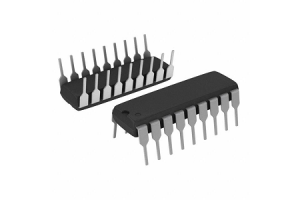
LM3915 Dot/Bar Display Driver: Pinout, Circuit, and Datasheet
on November 14th
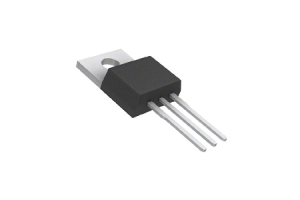
Mastering the BD243 NPN Power Transistor for Power Applications
on November 14th
Popular Posts
-

What is GND in the circuit?
on January 1th 3227
-

RJ-45 Connector Guide: RJ-45 Connector Color Codes, Wiring Schemes, R-J45 Applications, RJ-45 Datasheets
on January 1th 2787
-

Understanding Power Supply Voltages in Electronics VCC, VDD, VEE, VSS, and GND
on November 19th 2556
-

Fiber Connector Types: SC Vs LC And LC Vs MTP
on January 1th 2244
-

Comparison Between DB9 and RS232
on January 1th 1861
-

What Is An LR44 Battery?
Electricity, that ubiquitous force, quietly permeates every aspect of our daily lives, from trivial gadgets to life-threatening medical equipment, it plays a silent role. However, truly grasping this energy, especially how to store and efficiently output it, is no easy task. It is against this background that this article will focus on a type of coin cell battery that may seem insignificant on the...on January 1th 1829
-

Understanding the Fundamentals:Inductance Resistance, andCapacitance
In the intricate dance of electrical engineering, a trio of fundamental elements takes center stage: inductance, resistance, and capacitance. Each bears unique traits that dictate the dynamic rhythms of electronic circuits. Here, we embark on a journey to decipher the complexities of these components, to uncover their distinct roles and practical uses within the vast electrical orchestra. Inductan...on January 1th 1786
-

CR2430 Battery Comprehensive Guide: Specifications, Applications and Comparison to CR2032 Batteries
What is CR2430 battery ?Benefits of CR2430 BatteriesNormCR2430 Battery ApplicationsCR2430 EquivalentCR2430 VS CR2032Battery CR2430 SizeWhat to look for when buying the CR2430 and equivalentsData Sheet PDFFrequently Asked Questions Batteries are the heart of small electronic devices. Among the many types available, coin cells play a crucial role, commonly found in calculators, remote controls, and ...on January 1th 1770
-

What Is RF and Why Do We Use It?
Radio Frequency (RF) technology is a key part of modern wireless communication, enabling data transmission over long distances without physical connections. This article delves into the basics of RF, explaining how electromagnetic radiation (EMR) makes RF communication possible. We will explore the principles of EMR, the creation and control of RF signals, and their wide-ranging uses. The article ...on January 1th 1760
-

Comprehensive guide to hFE in transistors
Transistors are crucial components in modern electronic devices, enabling signal amplification and control. This article delves into the knowledge surrounding hFE, including how to select a transistor's hFE value, how to find hFE, and the gain of different types of transistors. Through our exploration of hFE, we gain a deeper understanding of how transistors work and their role in electronic circu...on November 19th 1747

